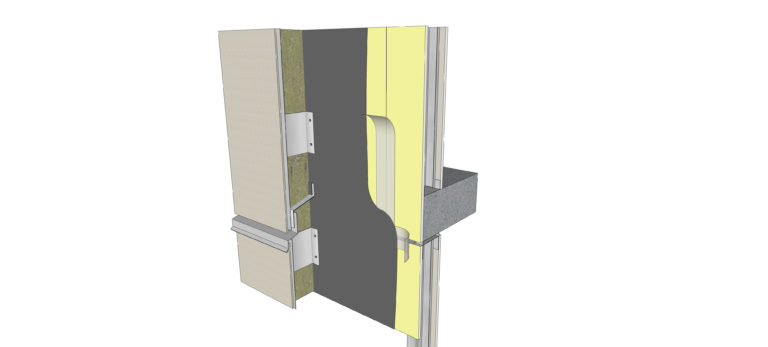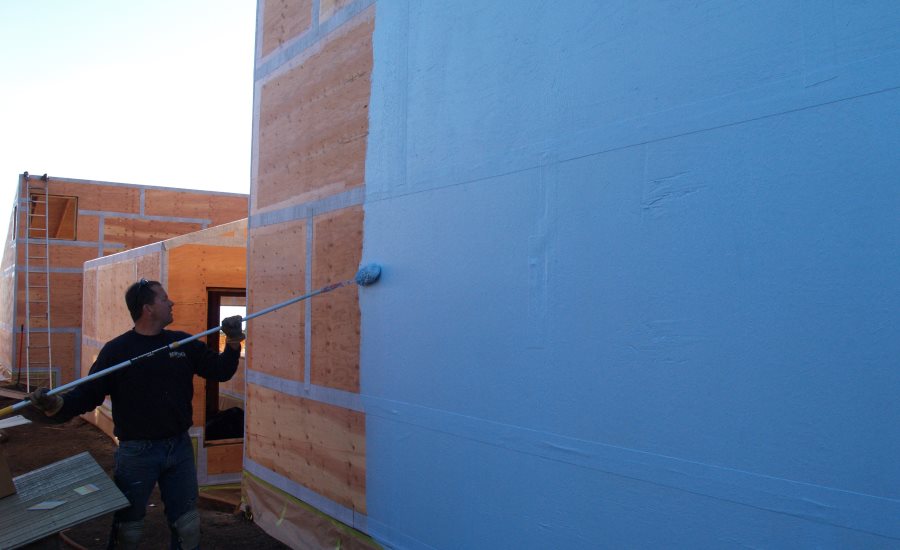A Look at the Downsides of Liquid Air Barriers
Air barriers can come in many forms with varying types of applications. The most common include mechanically-fastened wraps, liquid applied (also known as fluid applied), and self-adhered membranes.
An air barrier’s main function is to prevent air and any accompanying moisture from getting into a building’s interior. Each system has ups and downs that are mostly tied to the process and limitations of their individual application.
Let’s take a quick look at liquid air barriers, and the pitfalls of these systems.
Liquid air barrier characteristics
Liquid membranes share some of the advantages self-adhered membranes offer, and are particularly useful for complex detailing.

Liquid-applied air barriers rely on a supporting substrate to provide a continuous backing in order to achieve an airtight barrier. Joints typically require specific detailing considerations and often incorporate membrane reinforcement. The substrate and weather conditions can significantly affect curing time and adhesion. The manufacturer’s instructions should be strictly followed.
Liquid-applied membranes are generally used as the water-resistive barrier and must be installed and detailed as such.
Common disadvantages of fluid-applied air barriers
As the name suggests, a fluid-applied air barrier is installed in fluid form. Typically, this installation is done via a specialized spray gun which will deliver material at a constant, even rate – but it’s this need for precision that makes installation a downside to this air barrier system. Fluid-applied barriers must be applied at a consistent thickness, warranting the need for a steady and professional hand.

What this means is that the quality of a liquid air barrier is determined, in large part, not in a quality-controlled factory, but on the job site by the installer. And with the shortages of skilled labor in construction today, contractors need to pay attention to the qualifications and skills of their installers.
You might also like…Ensuring High Quality from Design to Construction
The second pitfall of liquid air barriers is an aversion to substrate moisture and humidity. If the substrate on which the fluid-applied air and moisture barrier is being applied is too humid or moist, it can lead to incomplete bonding between the materials. Eventually, the air barrier can begin to flake up or pull away from the substrate beneath, forming holes in the air barrier system. For this reason, contractors are hesitant about applying liquid air barriers in regions known for moist and humid weather or frost-covered substrates.
And finally, cost can be the deciding factor when it comes to picking between which type of air barrier systems to use. Fluid applied air barriers tend to be more expensive. This isn’t just because of the cost of the liquid air barrier material itself, but also because a contractor must also pay a skilled installer to apply it.

Every air barrier system comes with its own set of pros and cons. If you would like to know more about the air and moisture barrier systems we offer, check out our selection of high-quality air and moisture barrier systems for both residential and commercial applications.
Dörken delivers innovative, high-performance air and moisture barriers for commercial and residential construction sold under the DELTA® brand name. A North American manufacturer based out of Beamsville, Ontario, Dörken Products, Inc. is a subsidiary of Ewald Dörken AG, a leading European developer and manufacturer of waterproofing and drainage products sold worldwide. Dörken is known for delivering premium products while providing educational programs and full technical support. For more information, call 1-888-4DELTA4 (433-5824) or visit www.dorken.com.
